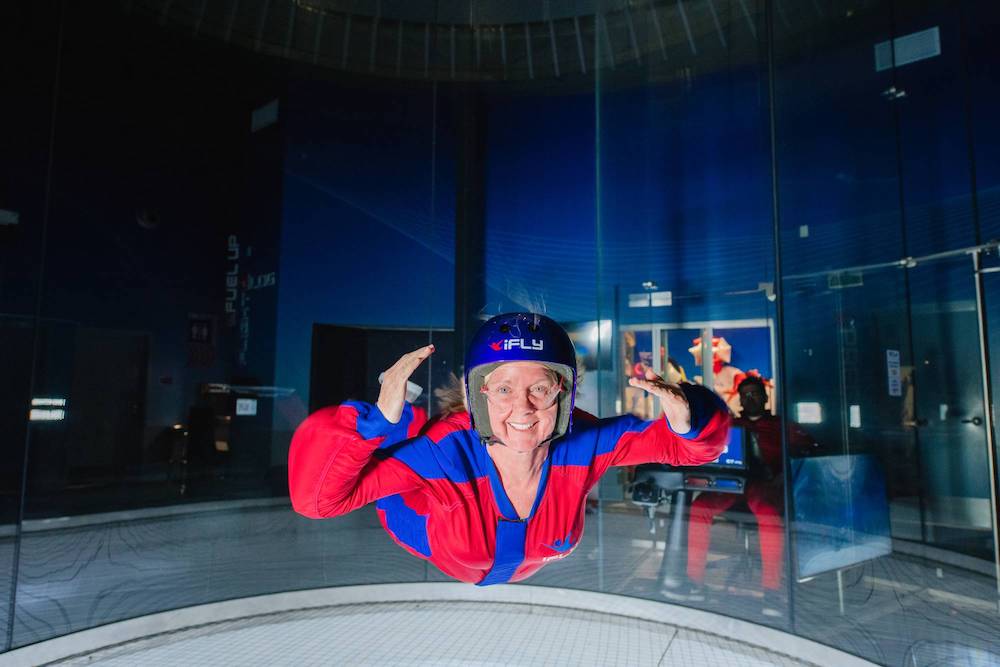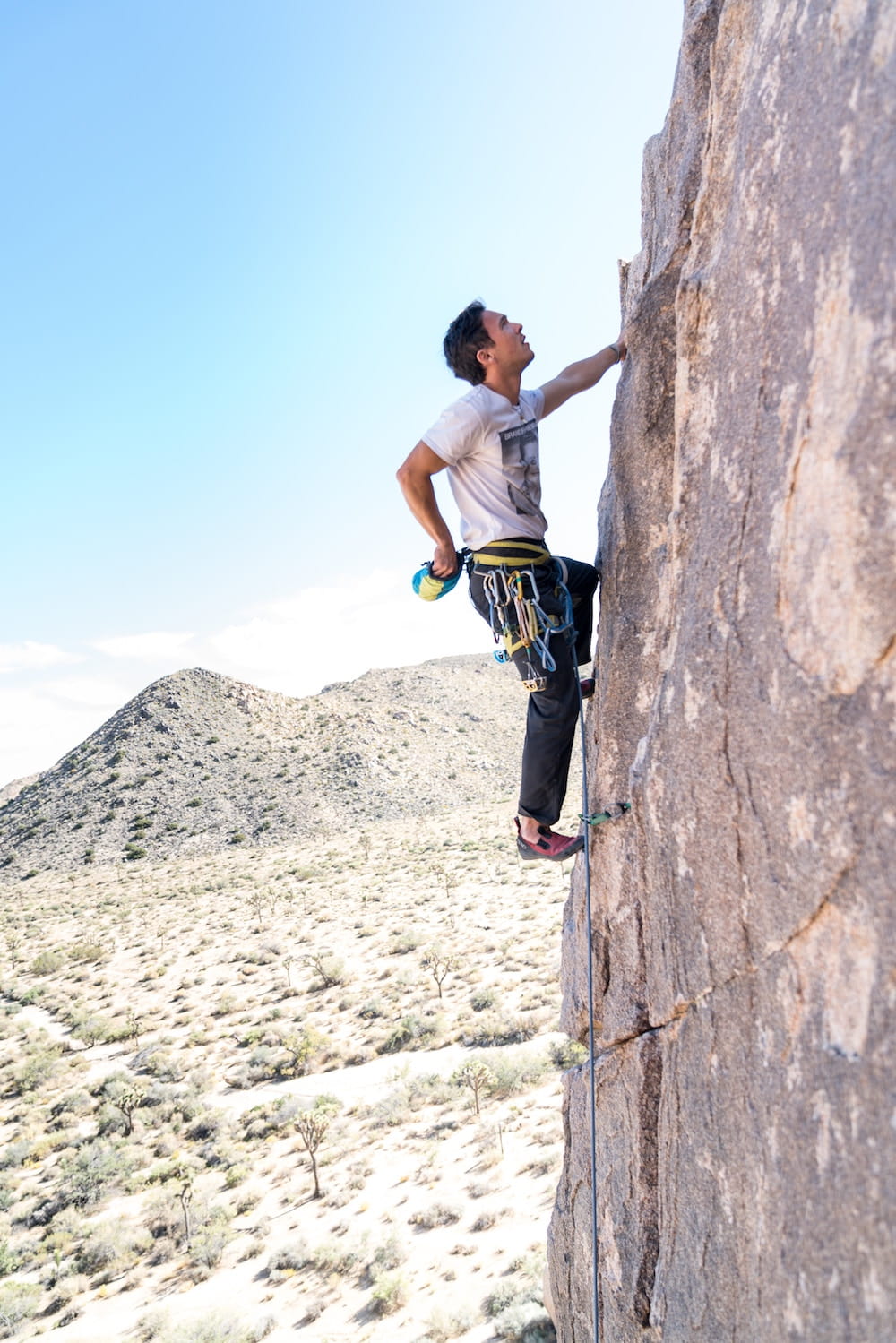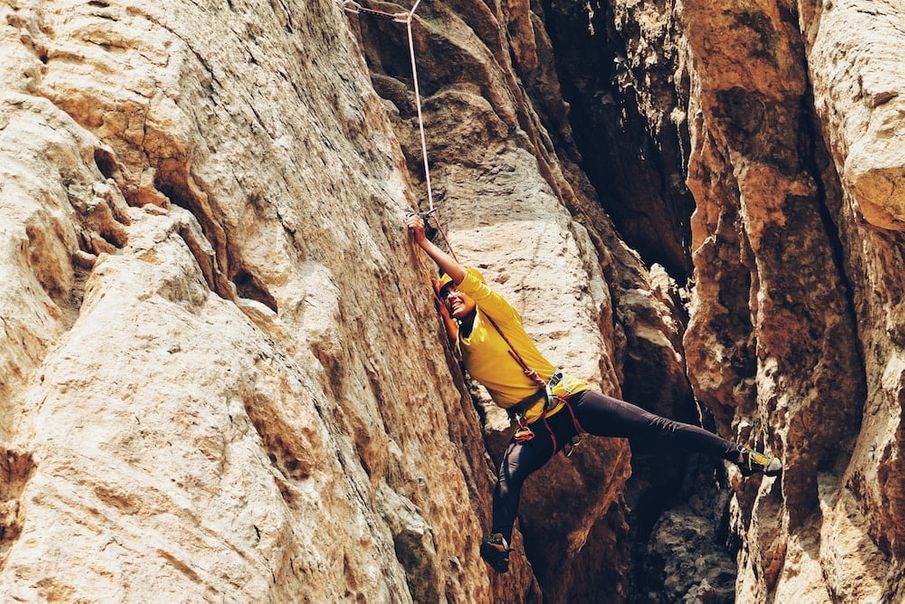Whether you’re doing it 10 feet under water or 10,000 feet in the air, how can ‘extreme sports’ keep us grounded?
What do you need to do when you want to find a mindful moment? Go for a slow stroll? Meditate? None of these?
Quiet, gentle activities aren’t for everyone. But that doesn’t mean that pockets of peace can’t be found elsewhere. There are moments of mindfulness to be found even in seemingly extreme situations. Situations where our palms are sweaty, our hearts are racing and, when against all our primal-instincts, our mind tells our body to “let go”.
Studies have shown that a rush of adrenaline has the power to kick-start our psyche, and the discipline required to take part in “extreme sports” lead us to find peaceful, mindful moments.
Whether you’re tempted by the weightlessness of scuba diving, the exhilaration of indoor skydiving, the pride of rock climbing, or the perspective of paragliding, what can “extreme sports” teach us about mindfulness?

Indoor skydiving
Why do we dream about flying? Dream interpreters say it’s all about longing for a sense of freedom and a desire to escape the pressures of the real world. Indoor skydiving is the closest thing we have to flying without wings, and can give us a taste of that freedom.
Indoor skydiving takes place within a “wind tunnel” which blows at more than 100 miles per hour. A step inside exposes you to a floating or flying sensation, rather than the free-falling feeling of regular skydiving.
“When throwing yourself into more intense sports, such as indoor skydiving, your full attention is focused completely on the present. This can really help people to enter a natural state of mindfulness,” says Shane Evans, general manager at iFLY, an indoor skydiving centre in Milton Keynes. “When flying at 110mph, there is little to no room for extraneous thoughts as the body produces adrenaline and sets off endorphins within. It gives us an all-body workout, helps mental agility, and encourages us to engage with the present moment.”
Indoor skydiving offers a level of risk that most of us will be comfortable with, and we can all take part in regardless of age or physical ability. Take a step into the wind tunnel and leave your troubles behind.
Rock climbing
How does it feel to stand at the foot of a rock-face, staring up and mapping your way to the top? And what’s it like to then stand at the top, to look over the edge and know that, as your mind and body worked in sync, you conquered a seemingly impenetrable face of rock? Pretty amazing, apparently.
In fact, this feeling of self-efficiency has such an incredible effect on our psyche that scientists have found it can even ease severe depression.
In a 2015 study published in BMC Psychiatry, researchers looked at the effect climbing had on people with depression.

Over 16 weeks, half the participants climbed regularly, and the other half served as the non-climbing control group. The study concluded that rock climbing can be used to effectively treat depression, with researchers citing the way it activates intense emotions such as fear, pride and determination, along with the need to align your body and mind, as a few factors that make rock climbing so good for us.
We feel good when we achieve something measurable, and rock climbing offers us this triumph, as well as the opportunity to coordinate our minds and bodies, and work to our limits.
Scuba diving
Despite our best efforts, we often carry the weight of the world on our shoulders. But as we make our way through the shallows, or depths, of water we can experience real weightlessness.
In many ways, the techniques of scuba diving reflect those of mindfulness, such as the need to be in a state of “open monitoring” and learning deep, slow breathing techniques. It’s no wonder then that research has found that scuba diving can be a great reliever of stress.
A 2017 study published in Frontiers in Psychology compared the perceived levels of stress in a group of recreational divers to a multisport control group, before and after a week-long course. The diving group showed a significant improvement in mood and stress levels, which the researchers attributed to an increase in mindfulness abilities.
There’s also much wonder and pleasure to be found in swimming in open water and interacting with marine life. Diving offers us the opportunity to explore hidden depths and other worlds. And for those who find movement difficult on dry land, the weightlessness experienced when scuba diving can help to return some mobility.
Paragliding
You’ve watched, you’ve trained, and you’ve prepared, and now you’re gliding over fields, working with the wind to go where you please. With an uninterrupted 360-degree view, few experiences offer both the thrill and tranquility of paragliding.

This sport is all about balance. All the time you’re gliding, you control the deep postural muscles which not only build your core strength, but also encourage you to focus on the way that your body balances.
Though with appropriate training paragliding is perfectly safe, this high-risk sport propels you into the moment, and forces you to take in your surroundings. And the adrenaline left over from a flight can have long-lasting effects. A 2004 study from the University of Pennsylvania Medical Center, Philadelphia, found that adrenaline can have the same effect on the brain as antidepressants.
Paragliding may not be for the faint-hearted, and certainly not for the under-prepared, but for those who are committed to learning the ropes (or A, B, and C lines, as the experts say), there are pockets of peace to be found hundreds of feet above the ground.
Made-to-fit
Leave behind any preconceptions of what mindfulness looks like, and any visions of the kinds of people, and the kinds of bodies, that can take part in “extreme sports”. The only requirement for taking part is a willingness to engage with the moment.
But remember, if you are tempted by any of the sports here, make sure that you note all of the relevant safety precautions and don’t go about it alone. Join a club or take classes with an instructor.
There’s a whole other world out there for you if you want it, and moments of mindfulness to be found in even the most extreme of environments.


Comments